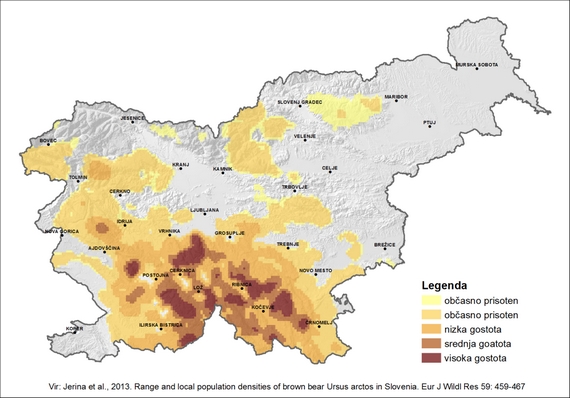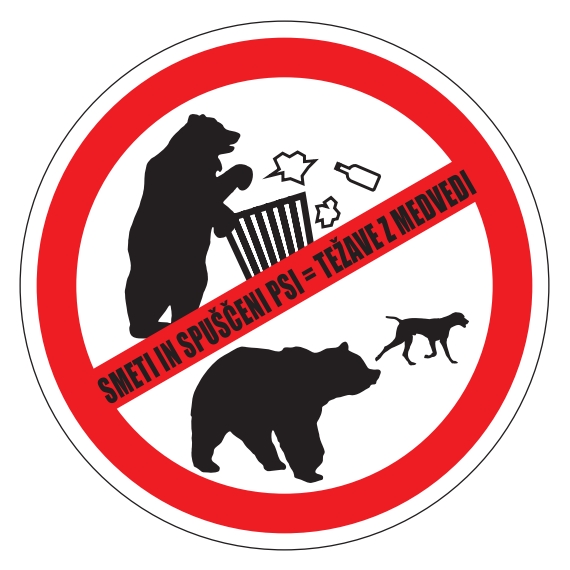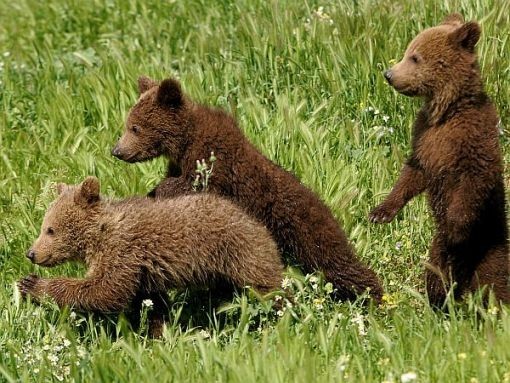Bear – The adorable furry creature you should be familiar with
Views: 35
Slovenians have a closer connection to the bear than it might seem at first glance. Many of us first encountered them as children, with a teddy bear placed next to our pillows. For people of the Dinaric Alps and the Karst region, the bear is a “close” neighbor, while the rest of us mostly just dream of “controlled” encounters. Nevertheless, the bear is still a wild animal, and despite usually avoiding humans, encounters are quite common. To ensure that they are also pleasant, we suggest that you take a few minutes and read the following text.
The brown bear (Ursus Arctos) is a carnivore. Despite its notorious family, it’s omnivorous – when sufficient plant-based food is available, it can make up to 95% of its diet. Bears gather various fruits and seeds and enjoy herbs, grasses, and clover. It’s well-known that they have a sweet tooth for honey, which is reflected in the word “medjed” (honey eater) being the origin of the name of this animal in all Slavic languages. The animal part of their diet is based on insects and larvae found under the bark of fallen trees and stones, and they also appreciate carrion. Bears will also go after any easily catchable live animals, such as young game or adult game in deep snow, and unprotected domestic animals, especially small livestock, are also at risk of becoming their prey.
| Bears don’t see humans as prey and they never stalk or hunt people on purpose. Their behavior during human encounters is not driven by hunger but by a sense of being threatened and their need to avoid this perceived danger. |
The greater the distance at which a bear detects a human, the bigger the chances that an encounter won’t even take place. In such cases, we might not even know that a bear was nearby. However, if we approach a critical distance, the bear, most often a mother with cubs, may perform an intimidation display or a bluff charge with the purpose of scaring off a real or perceived threat.
A bear rising to its hind legs doesn’t mean it’s about to attack! They have poor vision, so they stand up to get a better look at something they've heard or smelled.
Bears also stand up during a bluff charge to make a bigger impression on their enemy. They usually add threatening growls and roars to this intimidating posture. Despite this aggressive behavior, bears will not turn a bluff charge into a real attack unless further provoked by actions they perceive as threatening.
Where can you encounter bears in Slovenia?
Slovenian bears are part of the Alpine-Dinaric-Pindos population, which covers the area from the Eastern Alps in Austria and northeastern Italy to the Pindos mountains in Greece. Slovenia is located on the northwestern edge of the dense Dinaric bear population, making it the westernmost part of the brown bear population in Central Europe.
Most of Slovenia’s permanent brown bear population lives in the dense beech and fir forests of the high Karst region, which is characterized by rugged and inaccessible terrain. This area can be divided into three main sections:
- Western high Karst: extending north of the Ljubljana-Postojna-Razdrto highway. Although this is a high-quality forest habitat, bear density is low, especially on the Hrušica and Nanos plateaus.
- Notranjska region: covering the western slopes of Javorniki, Snežnik, and Iška. This region is immensely important for the conservation of large carnivores, as it continues south into Gorski Kotar. Here, agricultural pressure is practically non-existent.
- Kočevje-Bela krajina region: the largest part of Slovenia’s central bear area, which stretches from Iška to Bela krajina. Ecologically, it has the greatest carrying capacity, but bears are more threatened here than in the other two parts due to increasing agricultural pressure (sheep grazing and other agriculture/forestry activities).

Presence and population density of brown bears in Slovenia. Source: Srečanja z medvedi - Encounters with bears

| Bears see humans as dangerous opponents who are best avoided from afar. Both males and mother bears with cubs usually retreat quickly, as long as they detect humans in time. That’s why encounters are rare, even in areas where bears are relatively common. |
How to prevent encounters with bears?
- When walking in the forest, keep your dog on a leash. In areas where bears are constantly present, avoid walking your dog from May to June.
- Make noise (loud walking, whistling, normal conversation, kicking stones, hitting tree trunks with a stick) when walking in dense forests. This will alert the bear to your presence from far away.
- Don't linger near carcasses, carelessly and illegally discarded slaughterhouse waste, and feeding grounds. Don’t follow bear tracks.
- Make sure there are no accessible food sources around your home (biological waste, garbage, unprotected beehives, compost), which can allow bears to get used to human presence and are one of the main causes of bear-related problems in human settlements.
- Don’t approach bear cubs, even if they appear to be abandoned. If you see a cub, retreat as quickly as possible.
- Don’t go near bear dens.
What to do if you encounter a bear?
- If you spot a bear from a distance, retreat in the direction you came from calmly, slowly, and with no sudden movements. If the bear is coming towards you and hasn’t noticed you yet, alert it to your presence in a calm voice – most of the time, the bear will retreat. Never run, as this increases the likelihood of attack!
- If you encounter a bear or a mother with cubs at close range, stay as calm as possible. Don’t make any quick or sudden movements or noises. Stand still and slowly back away.
- If the bear charges at you, stand still – the bear will almost always stop. This is a bluff charge.
The intention of this text is not to spread fear of bears but to remind people to be cautious in areas where they might encounter bears. If an encounter does occur, the advice given should serve as a reason for calm and thoughtful behavior. Keep in mind that bears don’t attack humans out of hunger or malice, but only in distress when they feel extremely threatened. That’s why you should avoid actions that might further scare the bear and make it feel extremely threatened. This is the only way you can avoid the possibility of an attack.

